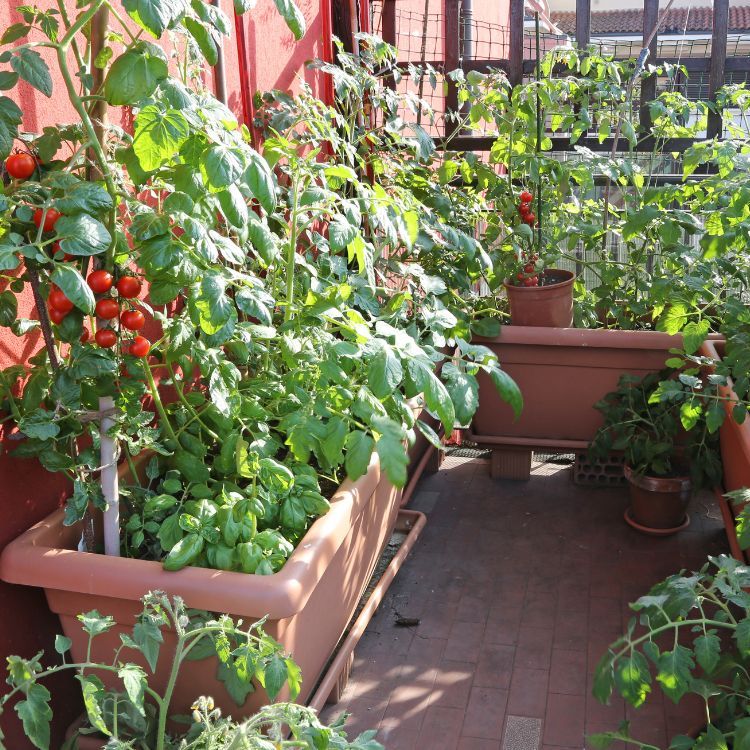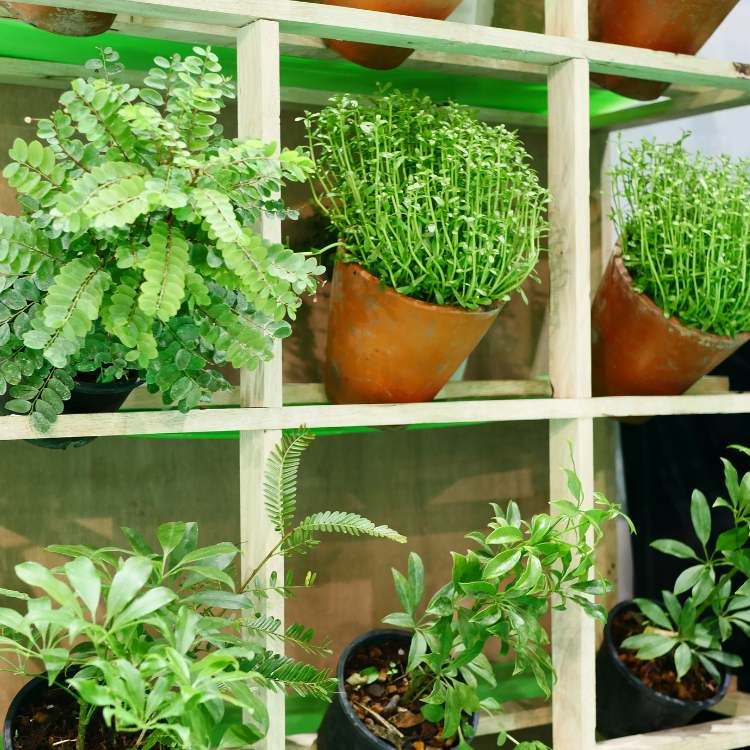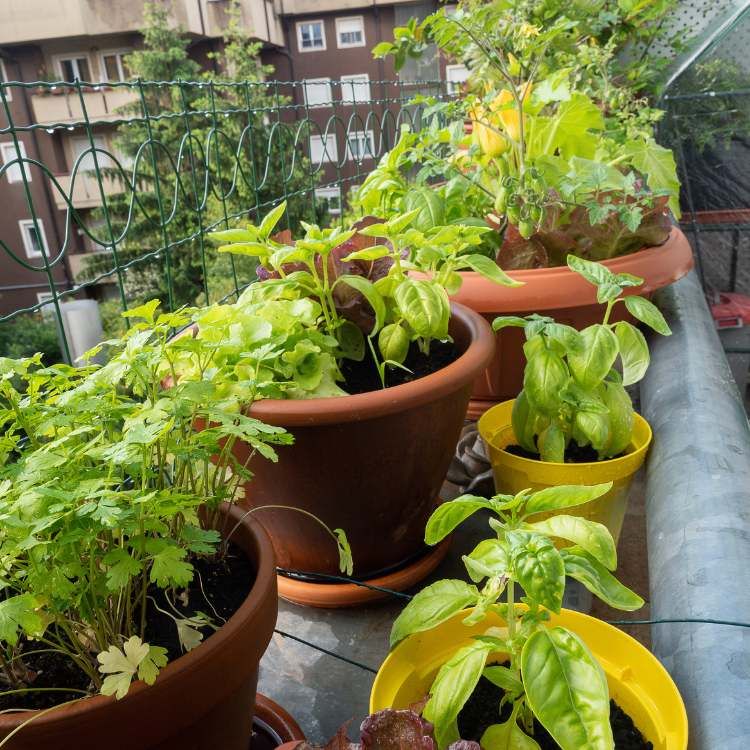
Key Takeaways
Micro-gardening is an efficient way to grow food in limited spaces such as balconies and patios.
Choosing the right location and containers is crucial for the success of an urban micro-garden.
Select plants that are suitable for small spaces and high yields, like herbs and leafy greens.
Regular care, including proper watering and pest management, ensures a thriving micro-garden.
Vertical gardening and hydroponics can maximize space and resources in urban gardening.
Unlock the Potential of Micro-Gardens
Imagine stepping onto your balcony and being greeted by lush greenery and the promise of fresh produce. That’s the allure of micro-gardening. It’s not just a hobby; it’s a revolution in urban self-sufficiency, turning the tiniest of spaces into verdant, productive gardens. Let’s dig into the how-tos of transforming your urban dwelling into a mini farm.
What Is Micro-Gardening?
Micro-gardening is the practice of growing plants in small spaces and containers. It’s a compact form of urban agriculture perfect for city dwellers who don’t have access to traditional garden plots. You can grow a variety of plants, from herbs to vegetables, right on your windowsill, balcony, or even a wall.
Because space is at a premium in the city, micro-gardening is about making the most of what you have. It’s gardening with precision and creativity, squeezing a little nature into our concrete jungles.
Why Choose Micro-Gardening in Urban Spaces?
Why go micro? Firstly, it’s about freshness and flavor. There’s nothing like the taste of a tomato, plucked right off the vine from your own mini garden. It’s also about control. When you grow your own, you know exactly what’s going into your food – no pesticides or herbicides, just pure, clean eating.
And let’s not forget the environmental impact. By growing your own food, you’re reducing your carbon footprint. Every plant you grow helps to purify the air and contribute to a greener planet.
Getting Started with Your Urban Micro-Garden
Ready to get your hands dirty? Here’s how to start your urban micro-garden journey.
Choosing the Right Location
The first step is to find the right spot. You want a place that gets plenty of sunlight – most edible plants need at least 6 hours of direct sun per day. A south-facing balcony or windowsill is ideal. If you’re short on natural light, consider investing in grow lights.
Also, think about water access. Your plants will need a steady supply, so a location near a water source will make your gardening life much easier.
Selecting Containers and Soil
Now, let’s talk containers. They come in all shapes and sizes, and which one you choose depends on what you’re growing. For most herbs and small vegetables, standard pots will do. But for larger plants, you might need deeper containers to accommodate their root systems.
And soil – it’s not just dirt. It’s the lifeblood of your plants. Opt for high-quality potting mix that’s designed for container gardening. It should be well-draining but also capable of retaining enough moisture to keep your plants happy.
Remember, the key to a successful micro-garden is to start small. Choose a few easy-to-grow plants and learn how to care for them. As you gain confidence, you can expand your garden and try new things.
Now that we’ve laid the groundwork, it’s time to delve deeper into the specifics of choosing plants, caring for your garden, and maximizing your space with vertical gardening and hydroponics. Stay tuned for the next sections where we’ll cover everything you need to know to grow your green thumb and your own food in the heart of the city.
Watering and Feeding Your Plants
Water is to plants what love is to life – absolutely essential. In micro-gardens, the key is consistency. Water your plants in the morning, and make sure the soil is moist but not soggy. For feeding, a balanced liquid fertilizer every two weeks will do wonders. It’s like a health shake for your plants, providing all the nutrients they need to grow strong and produce bountiful harvests.
Pest Management in Small Spaces
Pests can be a real party pooper in your garden fiesta. But fear not, for every pest, there’s a countermeasure. Introduce natural predators like ladybugs to deal with aphids, or use neem oil as an organic insecticide. Remember, prevention is better than cure, so keep your plants healthy, and they’ll be less tempting to pests.
Vertical Gardening: Growing Upwards

When horizontal space is limited, think vertical! Vertical gardening is a space-savvy gardener’s best friend. It involves growing plants on trellises, walls, or in stacked containers. This not only saves space but also can create a living green wall that’s both functional and beautiful.
DIY Vertical Garden Structures
Building a DIY vertical garden can be a fun weekend project. You can repurpose old pallets, ladders, or even hanging shoe organizers. The idea is to use vertical space creatively to grow more plants in the same footprint. Make sure your structures are sturdy and secure – after all, you don’t want your garden to come crashing down.
Another simple method is to use hanging pots or planters. They are perfect for herbs and small vegetables and can turn a sunny window into a cascading garden of edibles. Plus, they’re within easy reach when it’s time to water or harvest.
Vertical Plant Choices and Maintenance
Not all plants are suited for vertical living, so choose wisely. Vining plants like cucumbers, beans, and some varieties of tomatoes love to climb. Leafy greens, such as lettuce and spinach, also thrive in vertical setups because they don’t need deep soil to grow.
Incorporating Hydroponics in Urban Micro-Gardening
Hydroponics might sound like a science experiment, but it’s just growing plants without soil. Instead, plants are grown in a nutrient-rich water solution, allowing for faster growth and less water usage. It’s perfect for urban micro-gardens where space and resources are limited.
With hydroponics, you can grow plants in stacked layers, maximizing your yield per square foot. It’s a clean, efficient way to garden indoors, and you won’t have to worry about soil-borne diseases or weeds.
Getting started with hydroponics can be as simple as a DIY kit or as complex as a fully automated system. Whichever route you choose, the rewards of growing hydroponically are plenty – higher yields, less watering, and the sheer joy of watching your plants thrive in their aquatic environment.
The Basics of Hydroponics
To start with hydroponics, you’ll need a container, a water pump, an air stone to oxygenate the water, and hydroponic nutrients. Seedlings are placed in net pots with a growing medium like rockwool or clay pebbles to support the roots.
The system can be as simple as a single container with a few plants, or as complex as a multi-tiered setup. The key is to monitor the pH and nutrient levels closely to ensure your plants are getting exactly what they need.
Converting to a Hydroponic System
If you’re ready to take the plunge into hydroponics, start small. Convert a single container or a small section of your garden first. This will allow you to learn the ropes without being overwhelmed. There are many hydroponic systems to choose from, so do your research and pick one that fits your space and your gardening style.
Smart Tech for Efficient Micro-Gardens
Technology isn’t just for your living room; it has a place in your micro-garden too. Smart tech can help you monitor and manage your garden more efficiently, making sure your plants are getting exactly what they need, when they need it.
Automated Watering Systems
Automated watering systems take the guesswork out of watering. They can be programmed to water your plants at specific times, ensuring consistent moisture levels. Some systems even have soil moisture sensors that only water when necessary, conserving water and preventing overwatering.
Monitoring Plant Health with Apps
There are apps that can remind you when to water, fertilize, and even warn you about potential pest issues. They’re like a personal gardening assistant that fits in your pocket. With these tools, you can be sure that your garden is getting the attention it needs, even on your busiest days.
Maximize Your Harvest
Micro-gardening isn’t just about growing plants; it’s about getting the most out of them. Maximizing your harvest means understanding the life cycle of your plants and planning accordingly.
Succession Planting Strategies
Succession planting is a technique where you stagger the planting of crops to ensure a continuous harvest. When one crop is harvested, another is ready to take its place. This way, your garden is always productive, and your kitchen is always stocked with fresh greens.
Harvesting Techniques for Small Spaces
Harvesting in small spaces requires a gentle touch. Use scissors or your fingers to snip herbs and leafy greens, and always leave enough leaves for the plant to continue growing. For root vegetables, be careful not to disturb the surrounding plants when you pull them up.
Remember, the more you harvest, the more your plants will produce. So don’t be shy – snip, pick, and enjoy the fruits (and vegetables) of your labor.
Create a Sustainable Micro-Garden Ecosystem

A micro-garden is more than just a collection of plants; it’s a living ecosystem. Creating a sustainable system means thinking about the long-term health of your garden.
Attracting Beneficial Insects
Beneficial insects are nature’s pest control. Attracting them to your garden can help keep harmful pests at bay. Plant flowers like marigolds or herbs like dill to bring in ladybugs, bees, and other beneficial critters. It’s a natural way to maintain balance in your micro-garden.
Composting is a critical aspect of creating a sustainable micro-garden ecosystem. It allows you to recycle kitchen scraps and plant debris into rich, nutritious soil that will fuel your garden’s growth. Even in an urban setting, composting can be done effectively using small, contained systems like worm bins or bokashi buckets, which are perfect for apartments and small spaces.
Composting in Urban Settings
Urban composting might seem tricky, but it’s quite doable with the right approach. You can use a compact compost bin on your balcony or patio, or even under your kitchen sink. The key is to balance your greens (nitrogen-rich materials like vegetable scraps) and browns (carbon-rich materials like dried leaves or paper) to avoid odors and attract the right kind of decomposers.
Turn Your Micro-Garden into a Green Paradise
Micro-gardening is not just about utility. It’s about creating a lush, green oasis that can be both productive and aesthetically pleasing. With a combination of edible plants and ornamental touches, you can transform your urban space into a paradise that nourishes both the body and soul.
Edible landscaping is a fantastic way to blend form and function. By choosing plants that are both beautiful and edible, you create a space that’s not only a feast for the eyes but also for the palate. Think vibrant Swiss chard, flowering chives, or trailing tomatoes – each adds a splash of color and a dash of flavor to your urban retreat.
Decorative Elements and Edible Landscaping
Don’t underestimate the power of decorative elements in your micro-garden. A few well-placed ornaments, like a colorful planter or a whimsical garden stake, can add character and charm. Combine these with edible plants, and you’ve got a functional space that’s also a conversation starter.
Community Engagement and Sharing Your Harvest
One of the joys of gardening is sharing the bounty with others. Engage with your community by swapping seeds, sharing your harvest, or even starting a communal garden space. It’s a rewarding way to connect with your neighbors and spread the joy of micro-gardening.
Your Next Steps to a Greener Thumb
Now that you’re armed with the know-how, it’s time to get started. Begin with a plan, start small, and don’t be afraid to experiment. Gardening is a learning process, and every mistake is a lesson in disguise. With patience and practice, you’ll soon have a thriving micro-garden that’s the envy of the neighborhood.
Frequently Asked Questions
Got questions? I’ve got answers! Here are some common queries to help you on your micro-gardening journey.
How Do I Start a Micro-Garden in a Very Small Outdoor Space?
Starting a micro-garden in a small space is all about making the most of what you’ve got. Choose compact, high-yield plants, and make use of vertical space with hanging baskets or trellises. Remember, even a few pots of herbs or a single tomato plant is a step in the right direction.
Micro-gardening is about innovation and making use of every square inch. Utilize wall-mounted planters, railing planters, and even stackable containers to create layers of greenery. The sky (or the ceiling) is the limit!
What Are Some Common Mistakes in Urban Micro-Gardening?
One common mistake is overplanting. It’s tempting to fill every inch of space with plants, but overcrowding can lead to poor air circulation and disease. Another misstep is neglecting to consider the light needs of your plants; make sure each plant gets the right amount of sun or shade it requires to thrive.
Lastly, be mindful of watering. Overwatering can be just as harmful as underwatering, so ensure your containers have good drainage and you’re checking the soil moisture before reaching for the watering can.
Can I Still Grow Food if I Have No Balcony?
Absolutely! If you don’t have a balcony, look to your windowsills or consider community garden plots. Many herbs and some vegetables can thrive indoors with the help of a sunny window or grow lights. And don’t forget about the power of hydroponics, which can be set up just about anywhere.
Use windowsill planters for herbs and small veggies.
Consider indoor hydroponics for leafy greens and herbs.
Join a community garden to grow food and connect with others.
There’s always a way to grow your own food, no matter your living situation. It just takes a bit of creativity and a willingness to think outside the (planter) box.
How Can I Protect My Micro-Garden from Pests Naturally?
To protect your micro-garden from pests naturally, start by choosing disease-resistant plant varieties and maintaining healthy soil. Encourage beneficial insects by planting flowers or herbs that attract them. For specific pests, use organic solutions like neem oil, insecticidal soap, or homemade sprays made from household items like garlic or chili pepper.
What Are Some Vertical Gardening Systems I Can Build Myself?
DIY vertical gardening systems can be as simple as repurposing a wooden pallet or hanging shoe organizer. For something more elaborate, you can build a trellis or a pyramid planter. Use materials like PVC pipes, wooden planks, or even upcycled bottles to create your vertical garden masterpiece.
Remember, the goal is to use vertical space efficiently to grow more in less space. So, get creative, do some research, and build a vertical garden system that works for your unique urban environment. Buy Seeds Here







Leave a Reply